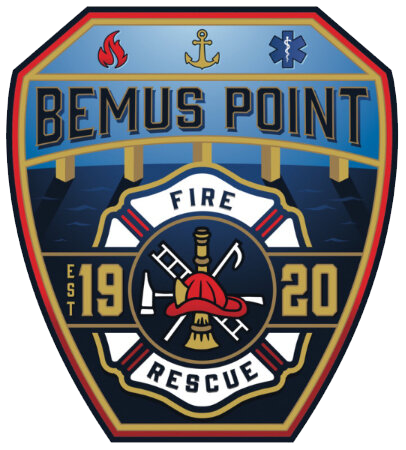BPVFD Training Opportunities
CLICK PHOTO FOR ZOOM
A job for everyone…
BPVFD prides itself on the fact that we have members in all age groups from teens through 80+ years old. There is a job for everyone. Please review the five fundamental fire service categories of membership below. Upon joining your local fire department, the officers of the department will discuss your interests and help you get involved in these programs. All classes are paid for 100% by the sponsoring fire department. Our department additionally hosts in-house trainings on topics across the spectrum on Tuesday nights to keep members refreshed and up to speed on the latest and greatest.
For more information on these courses, visit New York State Homeland Security and Emergencies Services:
http://www.dhses.ny.gov/ofpc/training/documents/trainingcatalog.pdf
FIRE
A member interested in pursing volunteerism in fire-related emergencies will be enrolled in BEFO, followed by IFO. The primary class will introduce the member to the fire ground and actions that can be taken to assist the members operating on scene. Upon passing BEFO, the member will take IFO to learn the strategies and tactics of structural firefighting, search and rescue, and ventilation techniques. Upon passing IFO, the member will have unlimited opportunities to pursue higher learning in the spectrum of structural firefighting.
EMS
A member interested in emergency medical care has two options to start in the field based on interest and time commitment. A CFR is the entry level of emergency medical care, which teaches the introduction to patient care and assessment. A member can opt to take emergency medical technician basic, roughly a 200 hour course over approximately 6 months where the member will learn more patient assessment and care skills. The basic emergency medical technician is the backbone of our Chautauqua County EMS system.
RESCUE
A member interested in rescue has a variety of avenues to follow, most of which begin with the basic rescue technician course, which introduces the member to knots, equipment, and low-angle rescue. The class provides more acute awareness of the other rescue classes, as well. From there, the member can pursue advanced vehicle extrication, HAZMAT, trench rescue, rope rescue, structural collapse rescue, confined space rescue, swift-water rescue, ice-water rescue, etc. Due to our operation of both air and water boats, we encourage our members to get involved in water rescue.
SCENE SUPPORT
For members either unable to commit the time to other classes or are physically unable to be involved due to external constraints, scene support operations can be acquired through the BEFO program or the Fire Police program, which teach members the basics of scene operation and traffic control. These members communicate with the commanding officers on scenes to provide secure operational areas free of motorists and help provide necessary equipment to those operating it.
Social Member
For members interested in participating in the department but prefer not to respond or are unable to, these members work with the administrative body continuously throughout the year to process income, write grants, etc. BPVFD has received numerous grants through the efforts of these members, continuously allowing us to update our equipment to the ever-changing standards of the fire service. These behind the scenes members have a large impact in keeping our department up to speed.
Shown below are pictures of BPVFD members during in-house and state curriculum training.
Click to enlarge the photos!
Community Fire Prevention:
Emergency egress & escape
Many home fires deaths occur when residents are trying to get to exits. Toxic smoke and heat between them and an exit can cause people to become disoriented, even in buildings in which they are familiar. As a member of the fire service, you should be familiar with the products and technologies available to consumers for residential use, including emergency escape masks, self-illuminated signs and smart escape systems.
Home fire sprinklers
Home fire sprinkler systems help to reduce the risk of civilian and firefighter fatalities and injuries, homeowner insurance premiums, and uninsured property losses. Yet—many homes aren’t equipped with automatic sprinkler systems often seen in hotels and businesses. Help members of your community understand the effectiveness and value of having a fire sprinkler system in their homes.
Smoke and fire alarms
Since the development of smoke alarm sensors there have been advances in microelectronics, sensors and other technologies to improve home smoke alarms. As smoke alarm technology advances, it’s important for members of the fire service to understand what’s next for smoke alarms, how they perform, and how to store and dispose of them.
Water supply systems
The U.S. Fire Administration (USFA) and the Society of Fire Protection Engineers worked together to evaluate trends and technologies related to municipal water supply systems. Special focus areas include interoperability, backup and redundant water supply systems, and critical infrastructure protection.
Fire Safety Handouts:
For additional materials, browse the audience and topic pages, below.
Apartment Fire Safety (Click for more information)
Candles, Smoking Materials, & Medical Oxygen (Click for more information)
Fire Safety Checklist for Homeowners & Renters (Click for more information)
Home Fire Protection & Escape Plans (Click for more information)
Important Ways To Keep Your Home Safe From Fire (Click for more information)
Outside Fire Safety (Click for more information)
Protect Everyone In Your Home From Fire (Click for more information)
Vehicle Fire Safety (Click for more information)
More fire prevention and public education resources:
Changing Severity of Home Fires Workshop Report (Click for more information)
Coffee Break Bulletin (Click for more information)
National Fire Academy fire prevention training courses (Click for more information)
National Fire Protection Association (Click for more information)
National Institute of Standards and Technology (Click for more information)
Risk Management Practices in the Fire Service (Click for more information)
Vision 20/20 (Click for more information)

































